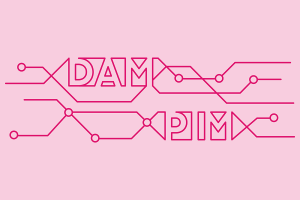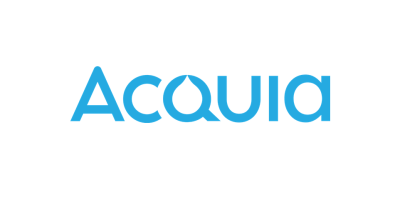
How We Make Our DAM and PIM Software

One important reason that organizations invest in Software as a Service (SaaS) tools is that they are regularly updated. At Acquia, we’re always working hard to deliver value-driven changes to our software solutions.
Sometimes these changes are obvious — like when we launch a new product, or make a visual change to the user interface (UI). Other times, changes are more subtle, like when we optimize the back end to support expanding customer utilization — which currently includes over 500 thousand downloads and 85 million embed code views per day.
Because we value transparency, we want to share how we make software at Acquia and are always working to provide you with the best solution.
It starts with listening
Our process of making software starts with listening. We listen to a range of stakeholders to understand what their needs are and how we can offer value. We intentionally speak with many different groups to listen for potential opportunities.
Customers. Customers drive our product evolution. We listen to our customers through surveys, interviews, feature requests, conversations, support tickets, and more.
As a customer, you can actively participate in our product roadmap. As new functionality develops, our research and development teams work with interested participants for feedback and prototype testing. You can impact our product strategy through exploratory research initiatives or diary studies and field studies.
Internal teams. Acquia has subject matter experts that are listening to customers, watching the market, and researching the industry to help inform our product’s development. We regularly leverage this expertise to inform deliverables and timelines.
The market. In addition to our customers, we listen to market experts. This includes buyers, analysts, and researchers. We also continuously meet with new customers — and buyers who selected another vendor — (something we call win/loss interviews) to get a pulse on the current market dynamics.
Ideas begin forming
By listening to these different groups, we generate plenty of ideas. Some are directly from suggestions, while others are informed by additional research. Then, we consider which ideas to pursue.
A cross-functional team identifies which ideas align with our product strategy. This alignment is critical because our product strategy keeps us focused on the problems and opportunities that we know we can solve, for our current and future customers.
Ideas become problem statements and are prioritized
The continual process of vetting ideas against our product strategy is a cross-functional effort across our Product, User Experience (UX), and Engineering teams. They try to confirm how many of our customers are experiencing certain issues and to what extent they create obstacles in their work. This is accomplished by studying user and persona data, interviewing customers, and reviewing current product usage data.
Our Product team then prioritizes the problems, identifies timelines, and sets goals.
Solutions are identified
With the problems thoroughly vetted and prioritized, our teams start working to solve them. While our entire process is a big loop, this portion of the process can be especially cyclical. Our teams are constantly iterating on sketches and prototypes — and then validating through user research.
The UX team explores process flows and starts sketching out concepts with software engineers. From there, sketches are turned into visual prototypes and those visual prototypes are tested. Based on the results of those tests, the concepts and prototypes are iterated until we have an intuitive and value-driven solution to the problem.
In addition to the front-end user experience research and prototypes, our back-end development team works to support the technical architecture needed.
Development and continuous improvement on solutions
We continually refine our solutions in sketch mockups and visual prototypes — as well as throughout the development process.
Our teams practice Agile methodology, which focuses on satisfying customers through early and continuous delivery of software.
Throughout this part of the process, our teams are creating user stories, working to meet expected deliverables, selecting product utilization goals, load testing, benchmarking performance, documenting updates, and making sure development is up to our standards. This process exists through two-week sprints. Each sprint is planned with the entire team to discuss the needs of the end-user, desired outcomes, and acceptance criteria.
User validation
Once our development teams have produced the code to meet the expected deliverables, our teams seek further user validation. The UX team leads customer testing and feedback sessions and brings their insights to the Product and Development teams. They iterate until we’re ready to release a functioning, valuable product.
“Testing throughout development — even with seemingly basic or straightforward changes — reveals how we can innovate in the future,” Mary Blabaum, UX Design Manager, shares. “A customer might mention a use case we hadn’t considered or question how it works with a different feature. Those insightful tidbits have the power to transform a design in the following sprints and make it so much more valuable.”
Launch to market
Our two-week sprint cadence means that we are launching updates to the market every other week. The changes in these launches vary in size — some are small updates, like removing a button to simplify the download process from a portal. Other changes are big, like the addition of new functionality to upload assets. All of these features are tracked on our Trello roadmap to provide transparency on what’s being delivered.
Feature announcements also appear in our in-app Product Update Hub so all users see the most recent improvements. To track ongoing releases, our Release Notes blog is updated each month to communicate all of the changes that have been made.
Listen and repeat
Even once a solution is launched to the market, we monitor adoption to continually listen and learn how our software is providing value to our user base.
Here’s a great example from the release of our Entries app that highlights our iterative approach, rapid deployments, and the important role of user feedback.
- Prior to the release, customer feedback highlighted some areas where users struggled to navigate in Entries to accomplish their tasks.
- We prototyped various solutions and tested them with customers and users.
- Several elements tested well in this prototype testing, including the addition of breadcrumbs to the navigation, “at a glance” indications of number of variants, and adjustments to the default options on the Import tab.
- These tested navigational updates were then implemented and rolled out to customers.
- After the updates were released, unmoderated user tests with customers and other users confirmed that the usability of navigation in the Entries app had been improved with this update.
What this process means for you, the customer
- Value-driven enhancements to Acquia DAM (Widen). Customer and market input informs every stage of the software creation process.
- Customer visibility into the changes, enhancements, and improvements we make. We deliver notifications about enhancements and improvements via multiple channels to keep everyone informed.
- Frequent releases that demonstrate our commitment to delivering new changes and improvements to your site.
So, how can you help?
We hope this gives you a good understanding of how we approach making software at Acquia. As you can see, you’re with us every step of the way. That’s why we want to hear from you. We need your input on our iterative designs, as feedback participants and idea generators.
To learn more or to get involved, follow our Trello Roadmap and reach out to your Acquia contact to participate in our user research.
Note: This article was originally published on Widen.com


